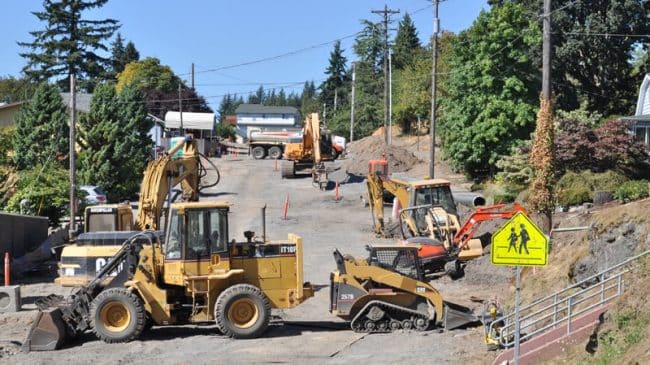Originally developed under California’s Assembly Bill 680 that allows concessionaires to build and lease up to four pilot projects, the South Bay Expressway was one of the first public-private partnerships (PPP) to enter and then emerge from bankruptcy. The experience and lessons learned in the process are relevant today.
The 9.2-mile, $658 million South Bay Expressway extended State Route 125 to the Mexican Border at Otay Mesa. The Expressway connected the only commercial port of entry in San Diego to the regional freeway network, and completed the missing link in San Diego’s third North-South freeway corridor. The private developer raised capital for the project and constructed the road in exchange for a 35-year toll franchise, awarded in January 1991. The developer bore all of the risk, including permitting, construction, operations and maintenance, rehabilitation and repairs. The California Department of Transportation (Caltrans) continues to own the highway, but the agency leases the road back to the franchise, taking on none of the risks required to operate the road. This experience teaches us that even if toll road investors lose money, public taxpayer interests are protected.
The need for a third expressway route from the border which would take traffic off I-5 and I-805 was added to the project list in 1959, and became part of the regional plan in 1989. However, this project would have languished for at least another decade were it not for the PPP. The public was acquiring a new asset, without any financial risk.
Actual construction didn’t begin until 2003 due to California’s difficult environmental permitting process. In order to secure the permits, the developer made some concessions including a commitment to enriching the communities it served. Key components of the agreement included:
- $20 million in environmental mitigation that involved the purchase of 1,000 acres of land to be used as an open-space preserve
- $14 million for community parks and trails and construction of six state-of-the-art youth sports fields
- $64 million in contracts to 60 local small qualified disadvantaged business enterprises
The South Bay Expressway finally opened in November 2007 just as the subprime mortgage market imploded, dramatically impacting the new communities that the expressway was built to serve. Within two and a half years the expressway filed for Chapter 11 bankruptcy protection citing construction delays, unanticipated costs including litigation expenses and economic fallout from the housing and credit markets. Yet despite bankruptcy, operations remained unchanged. The South Bay Expressway generated sufficient income to support services, maintenance and operations. It was the capital structure and debt repayments that forced bankruptcy. The public was never impacted.
A year later, after restructuring its debt and completely wiping out the equity investors, the expressway successfully emerged from bankruptcy. Soon thereafter, the San Diego Association of Governments, the local Metropolitan Planning Organization (MPO) that represents 18 cities and governments in the region, approached the lenders (who had become the owners of the franchise) and purchased the franchise for $344.5 million in cash and debt. The MPO will operate the project within its regional expressway network until Caltrans assumes control in 2042.
Despite the bankruptcy the project can only be viewed as a success – that is, unless you were an original investor.
- The public received a project that had been discussed for nearly 50 years, well before it would have otherwise;
- Customer service, operations and maintenance were undisturbed and continue to this day;
- The expressway continues to serve thousands of commuters that would otherwise have to use alternative routes adding to congestion elsewhere;
- SANDAG paid roughly half the original construction costs for the project, shielding taxpayers from considerable risks including construction and delivery, while bringing an important asset into the agency’s portfolio; and,
- Substantial environmental mitigation occurred due to the permitting process.
Using this lens, the experience the South Bay Expressway demonstrates an important, often overlooked, value of public-private partnerships. Investors shoulder significant risk when developing and delivering a project while shielding taxpayers from risk. It’s not difficult to imagine a scenario under which the public authority were to raise debt to develop South Bay, exposing taxpayers to considerable risk were traffic (revenue) not to materialize. Even in the event of bankruptcy the public benefited, as the project continued to serve the travelling public.
It also demonstrates that public-private partnerships are not a slam-dunk for investors. There are real risks involved in developing a major project but the South Bay Project illustrates that returns, when public-private partnerships work, can be reasonable.

